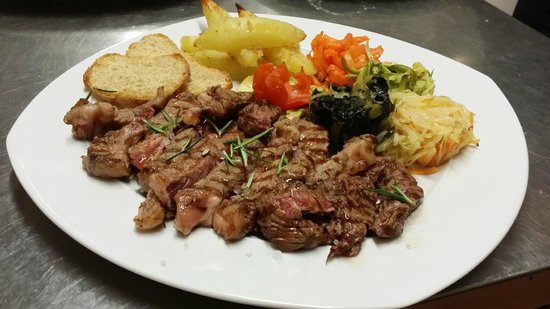Introduction: San Marino’s cultural traditions
San Marino is a small, independent state located on the eastern side of the Apennine Mountains in central Italy. Despite its small size, San Marino has a rich cultural heritage, with influences from both Italy and the surrounding regions. The country’s cultural traditions have had a significant impact on San Marino’s cuisine, which features a unique blend of local ingredients, cooking methods, and traditional dishes.
Culinary heritage of San Marino
San Marino’s culinary heritage is characterized by simple, rustic dishes that are made with fresh, seasonal ingredients. The country’s cuisine is heavily influenced by the surrounding regions, particularly Emilia-Romagna and Tuscany. San Marino’s cuisine is also influenced by its geography, as the country is situated on hilly terrain that makes it difficult to grow crops.
Indigenous Ingredients of San Marino
San Marino’s cuisine relies heavily on locally-sourced ingredients, such as wild game, mushrooms, and truffles. The country’s hilly terrain is also home to a variety of fruits and vegetables, including cherries, olives, and tomatoes. San Marino is also known for its high-quality wines, which are made using locally-grown grapes.
Traditional dishes & cooking methods
San Marino’s traditional dishes are characterized by simple, hearty flavors that are designed to satisfy. Some of the most popular dishes in San Marino include tortelli di zucca (pumpkin-filled pasta), piadina (flatbread filled with cheese, vegetables, and meat), and cacciatore (hunter-style chicken stew). San Marino’s cuisine is also known for its use of slow-cooking methods, which help to enhance the flavor of the ingredients.
Cross-cultural influence on cuisine
San Marino’s cuisine has been influenced by a variety of different cultures over the years. The country’s close proximity to Italy means that Italian cuisine has had a significant impact on San Marino’s culinary traditions. However, San Marino’s cuisine has also been influenced by nearby regions, including Emilia-Romagna and Tuscany. In addition, San Marino’s cuisine has been influenced by its historic ties to the Middle East, which has led to the incorporation of spices and herbs into traditional dishes.
Conclusion: San Marino’s unique gastronomy
San Marino’s cuisine is a unique blend of local ingredients, cooking methods, and cultural influences. The country’s culinary traditions have been shaped by its geography, which has led to the use of locally-sourced ingredients and slow-cooking methods. San Marino’s cuisine is also influenced by its historic ties to Italy and the Middle East, which has led to the incorporation of a variety of different flavors and spices. Overall, San Marino’s gastronomy is a true reflection of the country’s rich cultural heritage.

